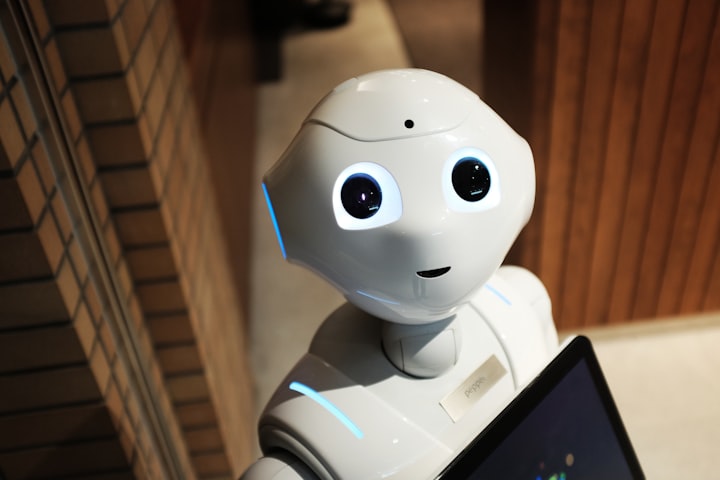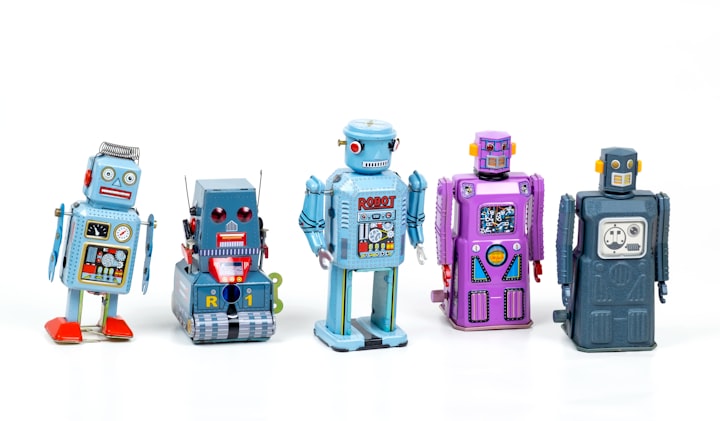Robots are Coming…., How can Humans Compete with Machines?
robots are coming at a frightening accelerating rate, people are becoming more and more worried about losing their jobs because of the fact that we became hugely dependent on them, as well as the speed and the rapidity of these robots in getting things done more quickly compared to humans.

Are we in the early beginnings of robots era , when all these machines will prevail in a time that may not be far away, and take over the jobs and tasks of humans and throw hundreds of millions of them into the abyss of unemployment?
Probably.
Martin Ford a futurist and author focusing on artificial intelligence and robotics, author of the book "The Rule of Robots : How Artificial Intelligence Will Transform Everything" says that:
" robots will not change some things or many things in our lives, but will change everything in the literal sense of the word."
The writer asserts that the "real revolution has not occurred yet, and we are still only in its first forebodings."
This may not be further from the truth, as robots began their career as humble tools that help humans perform some simple or repetitive tasks on a large scale, or work in dangerous conditions that may pose a threat to human life.
Now, with the recent developments in machine learning, artificial intelligence, and algorithms, it is much more than that, as robots have the ability to learn and perform many complex activities, tasks and functions that were monopolized by humans for decades.
fast growth

Robotics industry is expected to grow significantly in the coming years, and it is estimated that this sector could be worth $260 billion by 2030, Future Learn recently reported.
Last year, the total number of robotic units reached 12 million units worldwide, a significant 12% rise in robotics shipments was observed from 2020 to 2022 worldwide.
The robotics industry has succeeded in employing more than 150,000 skilled workers at the international level, and 88% of industries are planning to switch to automation in all aspects of their information technology infrastructure, according to the "Enterprise Engineering Solutions" platform recently.
A new mechanism for comparing human with robotic capabilities

The transformation has already begun, and the danger is real and present as it threatens the jobs of millions of people all over the world. In fact, when we think of robots, the first thing that comes to our mind: Will these robots replace us in our functional roles? Whatever the answer, the second question is almost certain: How can I be reassured that my job is not threatened?
A team of researchers from the Swiss University of Lausanne released a scientific paper that provides a detailed answer to these two questions, as they devised a way to assess which of the tasks and jobs that have already existed are likely to be performed by machines in the coming years , and that is by comparing robotic capabilities with employment and income , as well as the ability of humans to innovate and compete. .
career transition

The researchers also developed a "career transition" mechanism to transfer threatened employees and workers to other occupations that require less rehabilitation and training, as reported by the Analytics Insight platform, which conveyed the most important findings in the research.
Professor Dario Floriano, director of the University's Laboratory of Intelligent System, says, "Several studies have been conducted in the past to estimate the number of occupations that will be run by robots, but all of them have been highlighting software robots such as voice and image recognition, chat Financial advice, and many more.
He added: not only we have taken into account in our study artificial intelligence technology, but also real smart robots that carry out physical tasks, and we have created a mechanism to compare human with robotic capabilities in many professions.
the original aspect about this study is the new modeling capabilities of robots to meet business needs.
the working group studied the H2020 Robotic Multi-Annual Roadmap (MAR), a European Commission policy document that is constantly reviewed by robotics professionals, covering Dozens of skills needed for current robots or those that may be needed in the future, arranged in different categories such as: manipulation, vision, sensing, human interaction.
The researchers used a well-known measure of technical progress, or "Technological Readiness Level" (TRL), to review research publications, patents and product specifications to estimate the level of development in robotic skills.
They also relied on the online catalog of human capabilities, a set of resources widely used in the US labor market that categorizes a thousand jobs and identifies the talents and capabilities required for each.
Through these means, scientists can determine the tasks and functions that robots can perform, or those in which humans are preferred to be used, by comparing the human capabilities derived from the database built by the team with the robotic capabilities contained in the aforementioned European Commission document.
Suppose, there is a task or a job that needs someone to work with a higher degree of precision. Here, the rule will tell you that it is preferable to give this task to a robot rather than a human being where robots excel in this matter, meaning that the level of technological readiness "TRL" for robots is far Better than humans, but if there is a task or another job that does not need this much accuracy, instead it needs thinking and creativity to implement it, here the database tells you that it is preferable to give this job to humans to do.
How do we resist automation?

As a result, 1,000 jobs have been classified, with "physicists" facing lower risk of being replaced by robots, and "butchers and meatpackers" facing the highest risk. In general, jobs in the food, construction ,operating and industrial sectors tend to be at higher risk , as robots can do them better than humans.
"The biggest issue facing civilization now is how to become more resistant to automation." Professor Raphael LaLive.
The research provides comprehensive career recommendations for people at higher risk of machines taking over their jobs, allowing them to transition to safer jobs while rehabilitating many of their previous competencies. Governments should help societies become more resilient to automation by following these approaches.
Scientists then devised a way to identify alternative jobs to threatened jobs that are similar in nature to the previous job, but require skills that do not rely too much on automation, with the aim of restructuring and mitigating the risk to the lowest.
To see how this technology would work in real life, they used data from the American workforce, and designed thousands of occupational changes based on a specific algorithm that was used for this purpose with the aim of allowing workers and employees working in threatening occupations and jobs to move to other medium-risk, non-threatening jobs directly or immediately. , ensuring a more equitable redistribution of jobs between humans and robots in the future based on the abilities and capabilities of both sides.
Conclusion
Robots have become a reality, and the dependence on them in the future will increase even more, day after day, year after year .
There is no fear for humanity here, as humans have become accustomed to living and adapting to various circumstances and variables throughout the ages, and robotic era is not an exception to this rule.





Comments
There are no comments for this story
Be the first to respond and start the conversation.